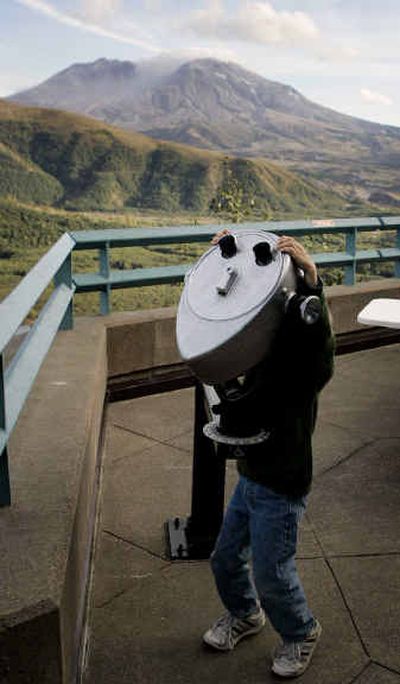Lava dome still rising, but quake activity low

MOUNT ST. HELENS, Wash. – Part of the lava dome in Mount St. Helens’ crater has risen 50 to 100 feet since Tuesday while earthquake activity remained low– signs that molten rock is moving upward without much resistance, scientists said Thursday.
The south side of the dome has been rising for the past week – about 250 feet so far – and is now nearly as tall as the dome’s 1,000-foot summit, said Tom Pierson, a U.S. Geological Survey geologist.
Despite the swelling, scientists said there was no reason to raise the alert level around the 8,364-foot volcano.
There’s an outside chance that an eruption could send a plume of ash 15 miles into the air or higher, but there is no indication that any eruption is imminent or that it would threaten lives or property, said Larry Mastin, a USGS expert in the physics of volcano eruptions.
There’s no way to tell when magma – molten rock – might reach the surface, USGS volcanologist Jake Lowenstern told a news conference at the Cascades Volcano Observatory in Vancouver, Wash.
Earthquake activity remained relatively low Thursday, with about one magnitude 1 quake per minute. The volcano occasionally vented steam as water trickled down and hit hot rocks, Lowenstern said.
Since Sept. 23, thousands of small earthquakes have shaken the peak in Washington’s Cascade range. Each day from Friday through Tuesday, Mount St. Helens spewed clouds of steam mixed with small amounts of ash.
An hourlong blast Tuesday morning was the largest in that series, sending a thick gray cloud thousands of feet in the air and dusting some areas northeast of the mountain with gritty ash.
Seismic activity started to diminish Tuesday, and geologists said the most likely scenario for the volcano was weeks or months of occasional steam blasts and possibly some eruptions of fresh volcanic rock.
On Wednesday, scientists lowered the alert level for the southwest Washington volcano, saying earthquake activity had fallen to the lowest level since before the mountain started venting steam last week.
USGS scientists downgraded the “volcano alert” to a “volcano advisory,” indicating the probability of an eruption that could endanger lives and property had decreased significantly since Saturday, when thousands of people were evacuated from the mountain.
Still, scientists cautioned that the mountain remained restless. “Escalation of unrest could occur suddenly and perhaps lead to an eruption with very little warning,” a statement from the Mount St. Helens Joint Information Center said Thursday. Geologists have said there is little chance of anything similar to the blast that blew 1,300 feet off the top of the peak, killing 57.